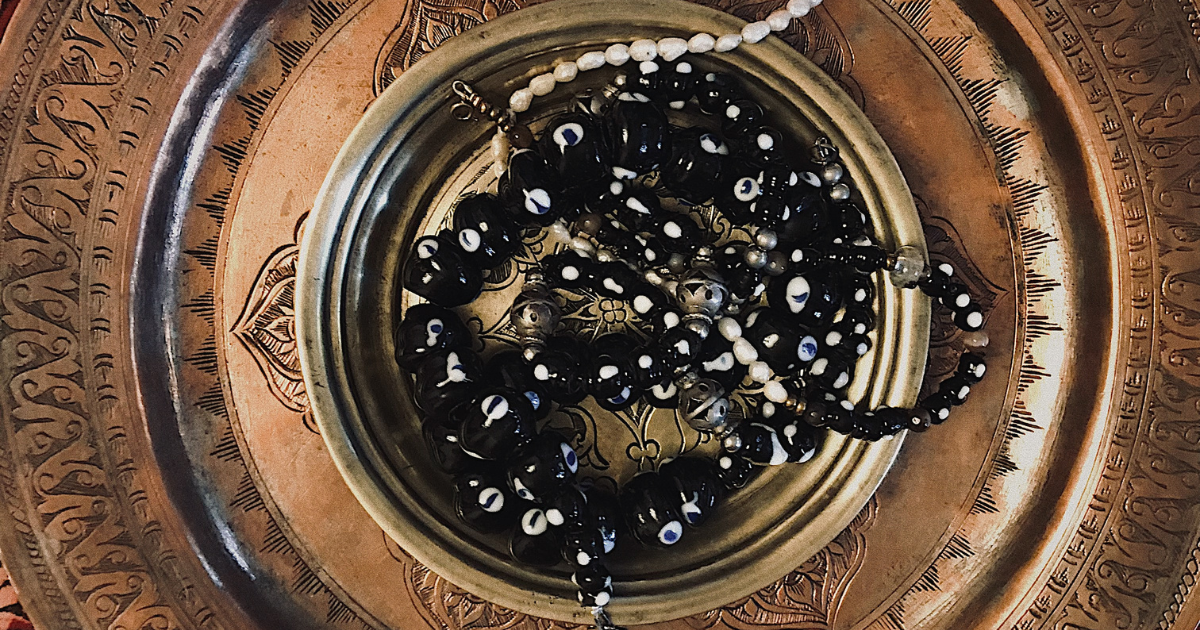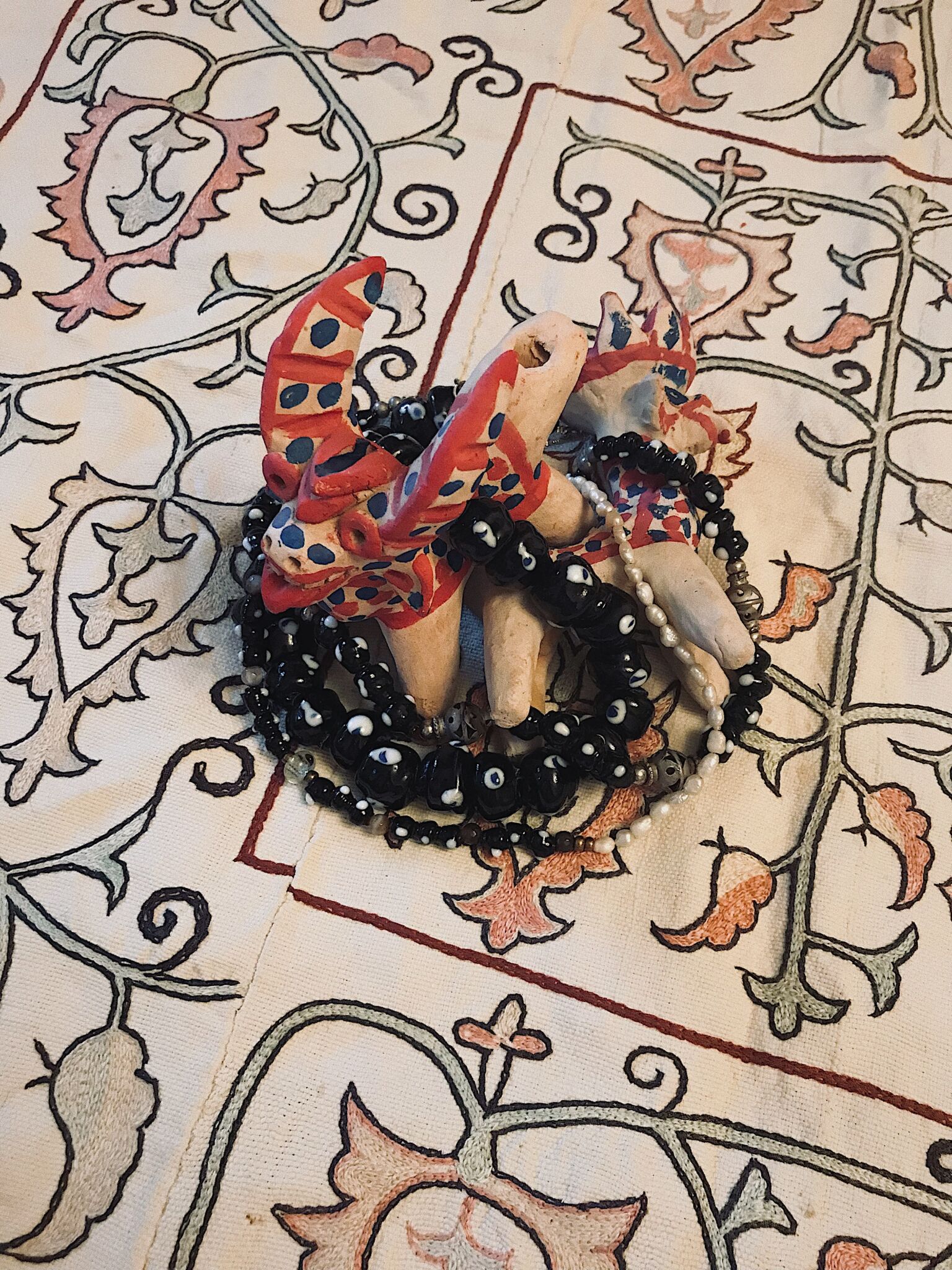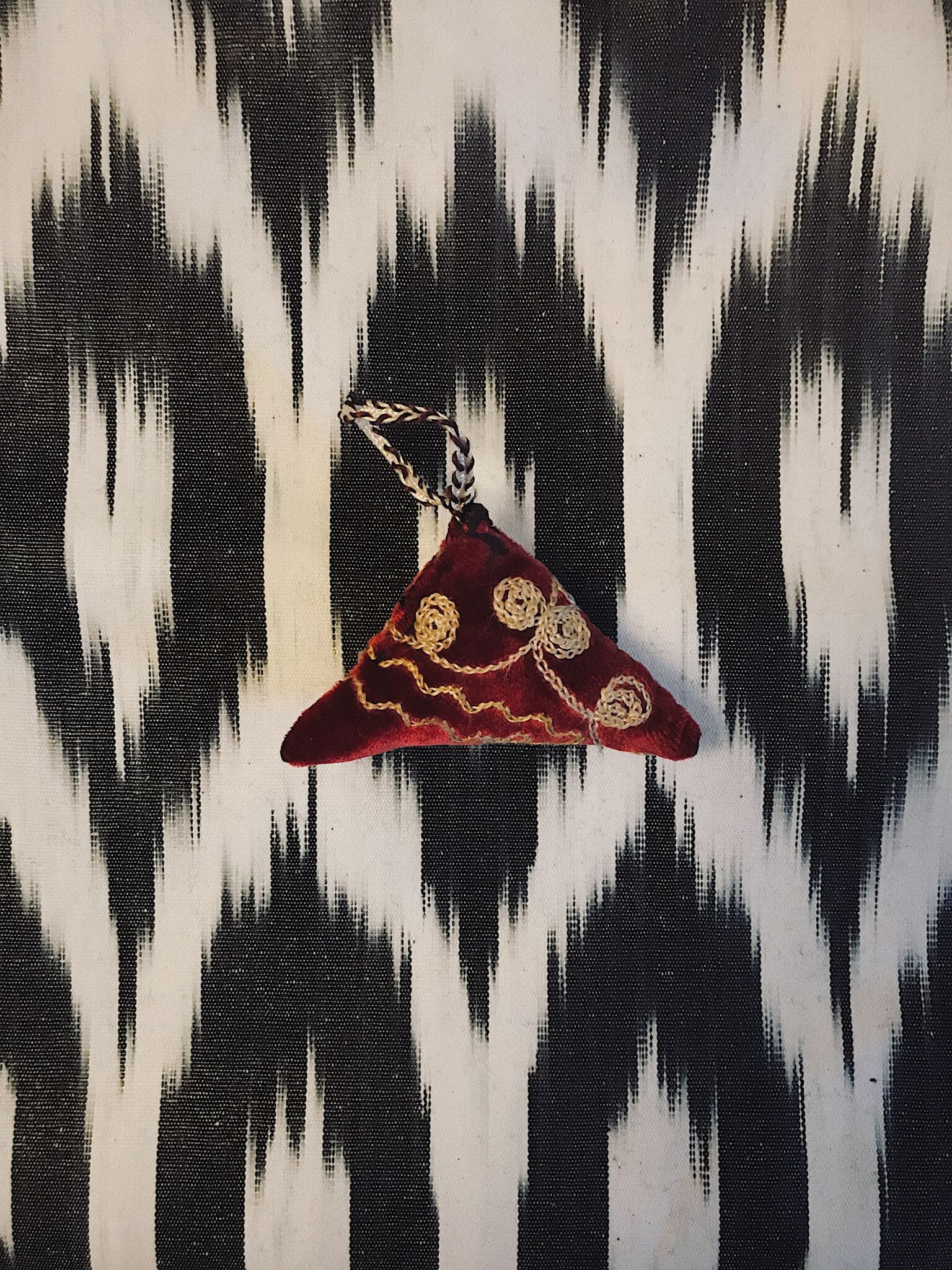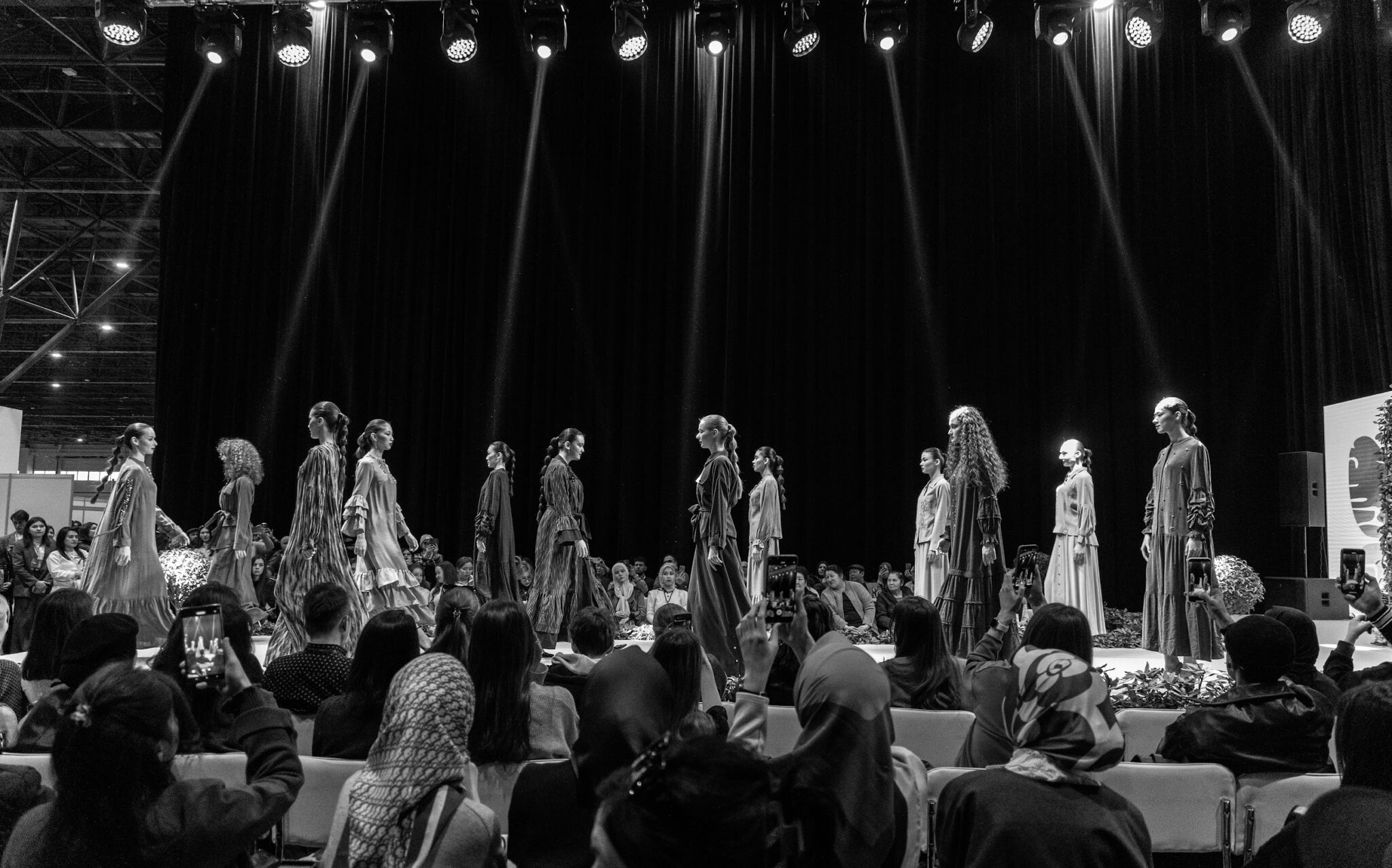Uzbek amulets
A bridge between past and present

Uzbekistan is a world where magic and mystery go hand in hand with everyday life. A country where centuries-old culture and ancestral traditions are intricately woven into the lives of modern people, with customs and beliefs passed down through art, symbols, and craftsmanship. Uzbek amulets are not just adornments but guardians of ancient wisdom and traditions, handed down from generation to generation.

Amulets and talismans: magic in the details
In Uzbek culture, amulets have deep roots, tracing back to ancient beliefs and traditions. Seemingly ordinary objects, such as ceramic dishes, embroidered fabrics, and decorative elements, are imbued with symbolism and carry positive energy. They not only beautify interiors and bring joy but also serve as protection against evil spirits, the evil eye, and misfortune.
In almost every Uzbek home, you can find these small but powerful protective items. For example, the "hamsa" is an amulet in the shape of a hand that protects the home from negative energy and attracts good fortune, while the "tumar" is a triangular talisman containing sacred texts or prayers. These amulets are often passed down from parents to children, remaining symbols of family protection and the continuation of traditions.

In Uzbek culture, ceramics also play an important role. These items are not only practical but also carry magical significance. The patterns on the dishes are not random—many contain ancient symbols meant to bring luck and prosperity into the home.
Embroidery, especially "suzani," is also deeply symbolic. Patterns featuring suns, flowers, and birds not only serve as decoration but also act as amulets, protecting the home and its inhabitants from negative influences and ill will.
All these objects are part of Uzbekistan's rich cultural tradition, exemplifying how beauty and protection go hand in hand, maintaining harmony between past and present, between magic and reality.
Bukhara embroidery: the magic of colors and forms
Special attention should be given to this unique Uzbek amulet—Bukhara embroidery, which is unmistakable thanks to its vibrant colors and intricate patterns. This embroidery often combines religious texts with images of a paradise garden—birds, flowers, and medallions symbolizing divine light.
According to ancient beliefs, women who created these patterns infused them with their thoughts on life, spirituality, and the universe. Every detail of the embroidery held a special meaning. For example, the central medallion, called "shams," symbolizes the sun and the divine source, serving as a source of light and energy. Surrounding it are floral patterns that recreate the image of a paradise garden where birds—symbols of life, freedom, and prosperity—fly.
These patterns are not just decoration but also a profound reflection of the craftswoman’s inner world, her spiritual quests, and her dreams. Bukhara embroidery is not just a craft but an art that lives through generations, conveying the traditions and beliefs of ancestors in every stitch, in every pattern.

Protection in every stitch
Uzbekistan is a country unique in its diversity, where each region carries its special traditions and symbols, creating a multifaceted cultural tapestry. For example, Samarkand and Tashkent embroidery, unlike the bright and rich Bukhara style, is more restrained and deeply symbolic. Its patterns reflect ancient traditions rooted in the pre-Islamic period. Circles, called "oy," symbolize the moon, while "chor chirog"—ancient lamps—are associated with temples.
A particularly significant item in Uzbek culture is the wedding cover. This amulet symbolizes the protection of the bride and supports her during the preparation for motherhood. The pattern of nine circles was symbolically linked to the nine months of pregnancy, giving the future mother energy and strength for the journey ahead.

Preserving traditions
Despite the rapid passage of time and the constant changes of the modern world, many ancient rituals have lost their power, and cultural traditions and beliefs have evolved. However, the habit and culture of using amulets remain relevant and are cherished in our country.
Today, Uzbek artisans continue to revive and preserve the ancient art of creating amulets and talismans. Uzbek amulets are not just decorations but living heritage from ancient traditions and beliefs. They are like the touch of our ancestors, a connection with our lineage. Each item, whether it’s a ceramic dish, a beloved piala, an embroidered fabric, or a decorative element, carries not only beauty but also deep symbolism, connecting the past with the present. They are an invisible bridge between the modern world and the world of ancient legends.

In our culture, every ornament and every detail carries a hidden meaning. By incorporating elements of Uzbek ceramics or embroidery into your home, you not only decorate your space but also invite a piece of ancient magic into your life.
photo: Serafim Dim


